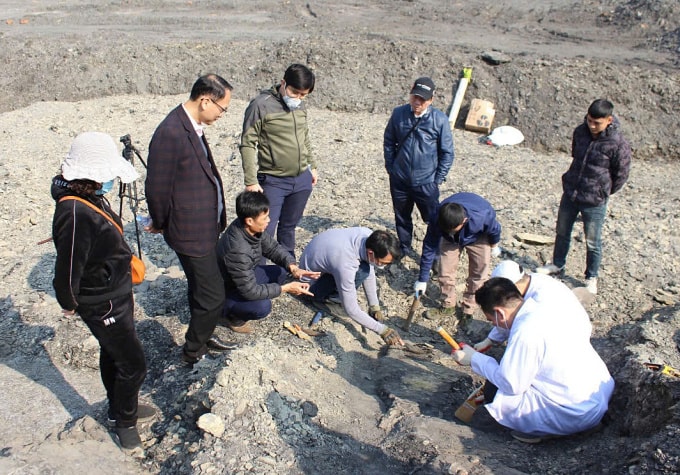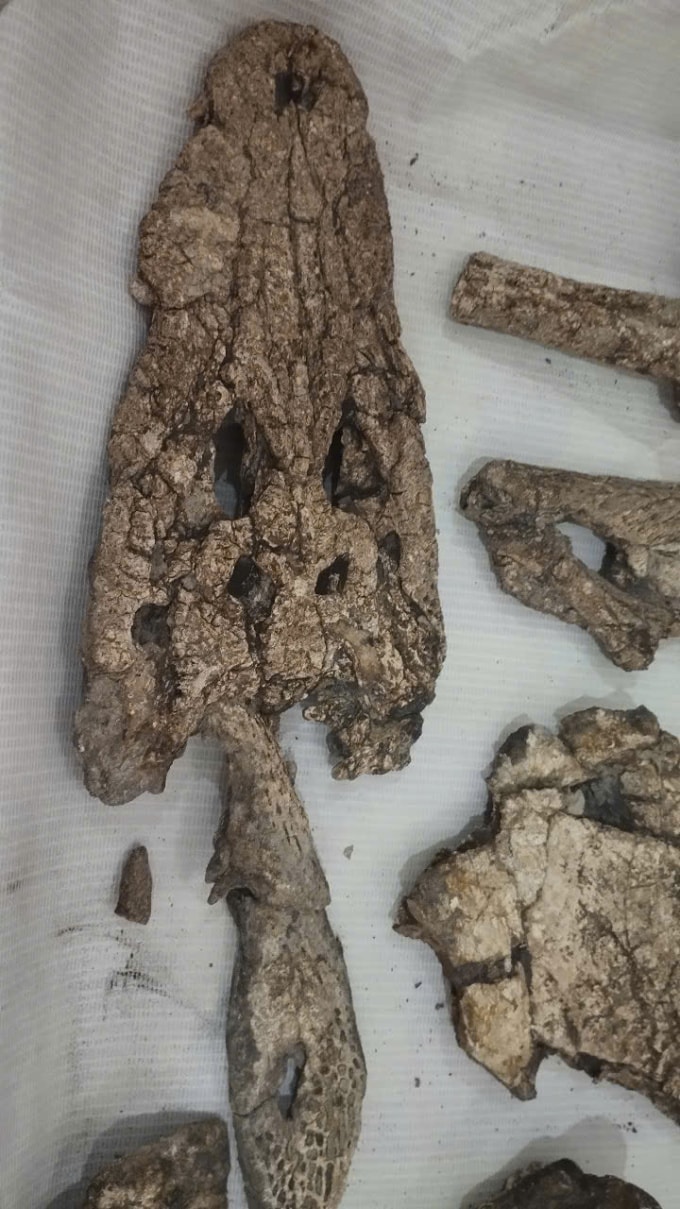Five fossils of ancient crocodiles discovered in the Na Duong coal mine area (Lang Son) date back about 41 to 33 million years ago.

A research team from Lang Son Museum and experts from the National History Museum have just discovered five fossils of ancient crocodiles in the Na Duong coal mine area, Lang Son province.
In which, the fossil upper jaw of a crocodile with 2 specimens measuring 41cm long and 12cm wide; the fossil snout of a crocodile is cylindrical, measuring 12cm long and 8cm wide, and is determined to possibly belong to the long-snouted crocodile species; a part of the upper jaw bone of a crocodile holding food from an unidentified animal, measuring 27.5cm long and 10cm wide.
In addition, the team also discovered 88 crocodile feces specimens and several other pieces of skin and bones of this reptile species.
Experts used the plaster casting method to preserve the original state of the artifacts and processed and collected a set of artifact samples for research and display at the museum.

The fossil specimens were found in the sedimentary layers of coal slag and brown coal at an altitude of 173 - 230 m on the slope of the No. 1 coal mine of Na Duong Coal Company. "Through classification and shape comparison, it was initially determined that the fossils belonged to at least 2 species of crocodiles out of a total of 3 species that have been studied and published in Na Duong basin," said Mr. Nong Duc Kien, Director of Lang Son Museum.
In addition to crocodiles, the research team also discovered fossils of freshwater turtles, animal bones, mussels, snails, and some plant fossils. The above specimens were determined to date to the Tertiary period of the late Eocene and early Oligocene, about 41 to 33 million years ago.
According to Associate Professor Dr. Nguyen Khac Su, former Head of the Stone Age Research Department, Institute of Archaeology, the new discoveries in Na Duong add to the collection of animal and plant fossils, including species such as crocodiles, amphibians, marine mollusc shells, and plants.
"These fossils confirm that the Lang Son area was formerly a swampy environment, belonging to the pre- and post-Neogene periods," Associate Professor Su said.
"Based on this data, we can comprehensively restore the ancient environment in Lang Son in particular and the Northeast region of Vietnam in general," said Mr. Su.
These additional findings not only enrich the collection but also facilitate further research in the future.
TB (according to VnExpress)